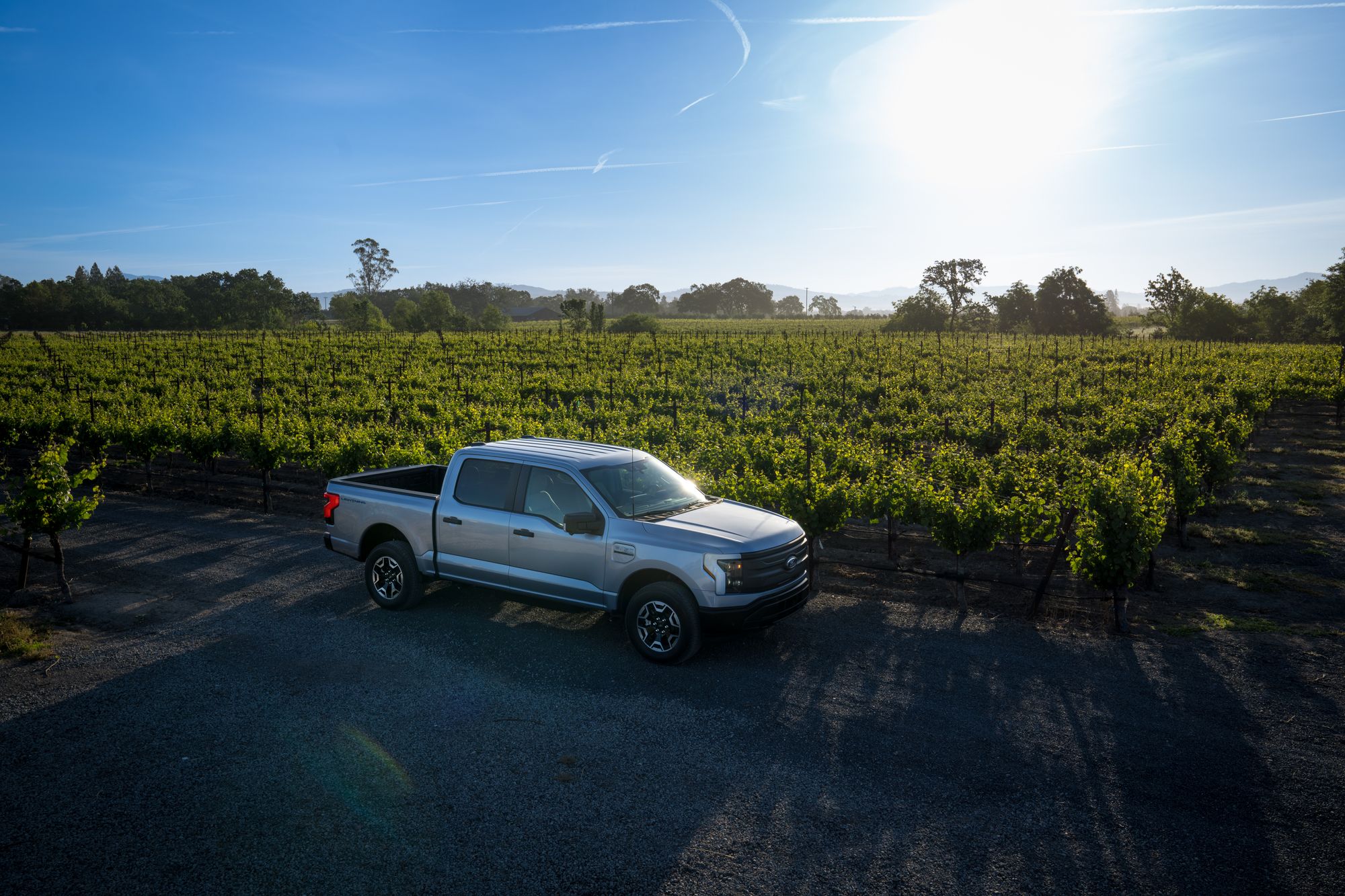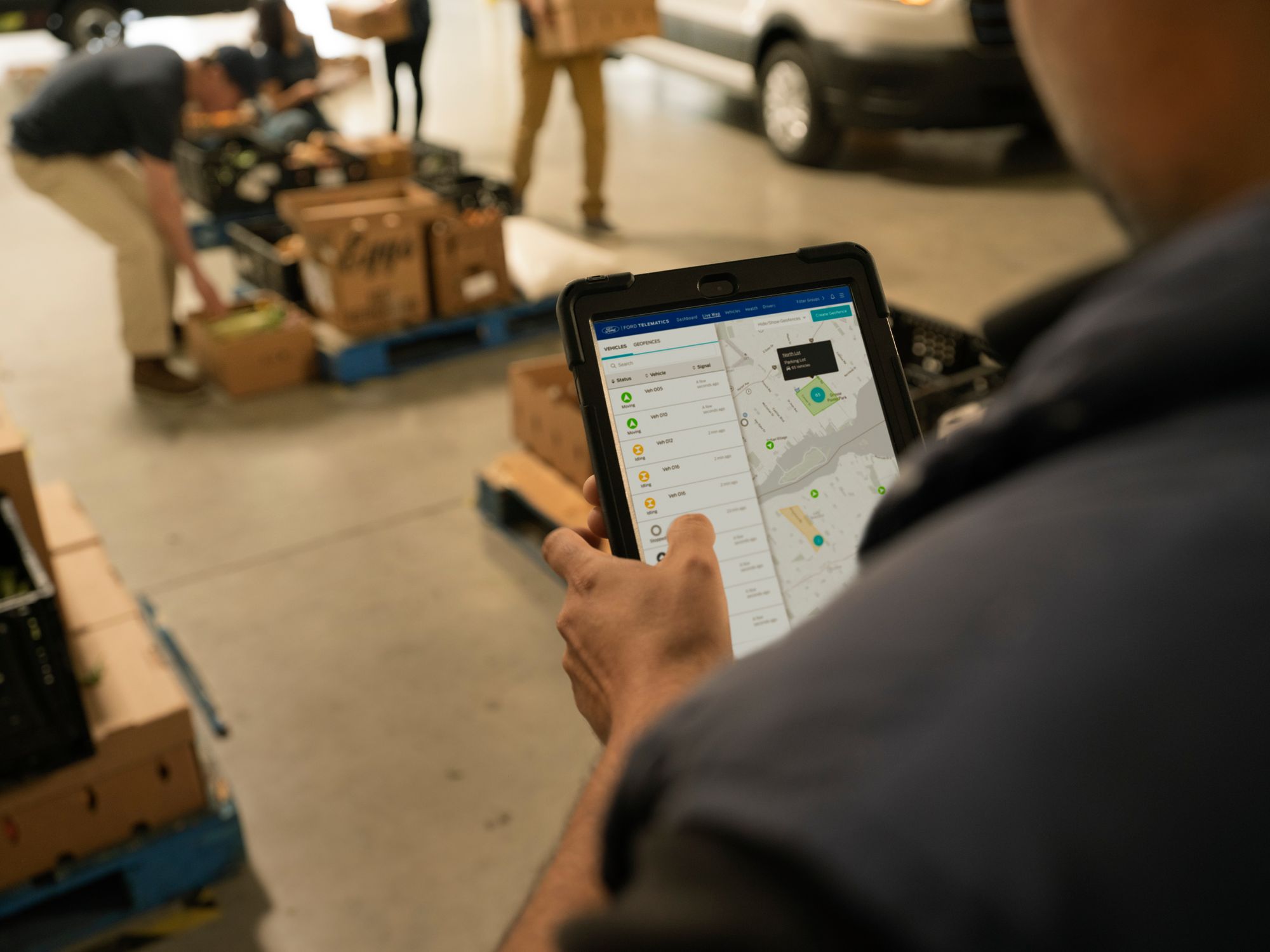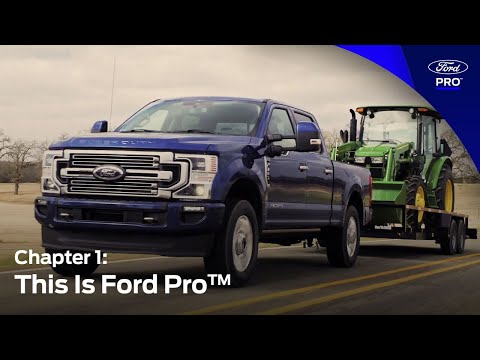The Farm Truck Gets Smarter
December 5, 2022 | 3 min read

An indispensable workhorse, the farm truck labors day and night. Now, real-time digital tools from Ford ProTM can help farmers gain insights about their trucks, which can help to save time and maintenance costs.
A truck is an essential tool on a farm. At the very least, it moves equipment, seeds for planting, tools for harvests and workers where they need to go.
“Some of our trucks just carry stuff back and forth to our fields,” says Steve Dutton, a fifth-generation California farmer. “That’s one job. Other trucks get hooked to a trailer every day to move equipment around or haul things. I need to know if the truck is going to be tough enough to perform the jobs we need to do,” he adds, citing the question he wants answered before any vehicle enters the farm’s fleet.

Fleet managers can access insights straight from the field and apply them across a fleet of gas and electric-power vehicles. These data tools lead to potentially lower operating costs and reduce unexpected downtime.
The Dutton Ranch grows apples and grapes across several miles in California’s Russian River Valley, and it uses a fleet of Ford trucks – F-150®, F-250® Super Duty® and F-450® trucks – to move apples and grapes to market, spread fertilizer and haul water to portable bathrooms during harvest season.1032 The trucks work from sunrise to sunset, just as trucks do across construction and work sites around the country. Dutton Ranch is participating in a paid sponsorship with Ford ProTM.
“We’ve farmed every viable crop you can farm,” Dutton says of his family’s 100-plus years of growing in California. “From prunes, pears, walnuts and hay and now to wine grapes and apples, we have farmed them all. To me it means that as farmers, we are ready to take chances and we change with the times to do whatever we need to stay in business.”
The Dutton family seeks tools that can adapt with them, which is one reason they turned to electric vehicles and charging solutions from Ford Pro. Today’s trucks are undergoing a significant evolution, with models such as the Ford F-150 converting from traditional gas to electric, like the Ford F-150 LightningTM.1088
Keeping Track of Trucks and Tools
As with many previous models, the Ford F-150 Lightning represents a meaningful advancement for Ford Pro. In addition to the truck’s new capabilities, it brings digital tools to keep fleet managers on farms and sprawling construction sites abreast of real-time vehicle health and driver monitoring. This real-time data, known as Ford Pro Telematics867 can monitor each truck individually as well as the fleet. Data tools bring insights straight from the field to the fleet operator and can be applied across a hybrid fleet of gas- and electric-power vehicles. The result is potentially lower operating costs and less unexpected downtime, since farmers can be alerted to when and what servicing will be needed.
Joe Dutton, Steve’s brother, said telematics promises to be a great tool “for us to use so we know when a vehicle is having problems.” With data from across the fleet, business owners and fleet managers can also, for example, reduce daily miles traveled by monitoring driving history and plot a vehicle’s route to help optimize fuel and battery use.
Bringing smart technology to a farm’s critical functions offers growers another way they can use technology to help improve their bottom line.
Disclosure(s)
- 1)
Dutton Ranch is one of three participating in a paid sponsorship with Ford Pro.
- 2)
2022 F-150 Lightning production begins spring 2022.
- 3)
Available on vehicles with embedded modem or equipped with approved plug-in device (PID). May require modem activation. Ford Pro™ Telematics and Ford Pro™ Data Services require a purchased subscription. Terms and conditions apply. Telematics service and features, and access to vehicle data, depend on subscription and compatible cellular network availability. Evolving technology/cellular networks/vehicle capability may limit functionality and prevent operation of connected features.
